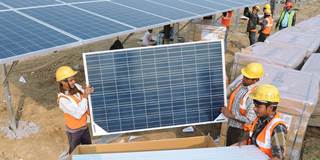
Trump’s Climate Scapegoat
By accusing India of demanding “billions" of dollars for its participation in the Paris climate agreement, US President Donald Trump has jeopardized what promised to be a close relationship between the world’s two largest democracies. But India must not allow Trump's mercurial presidency to derail 15 years of diplomatic efforts.
NEW DELHI – By accusing India of demanding “billions and billions and billions of dollars” as a condition for its participation in the Paris climate agreement, US President Donald Trump has ruffled what promised to be a close relationship between the world’s two largest democracies.